Welcome to the educationally fascinating world of ant coloring pages. As you bring these insects to life with your choice of colors, you’re not just coloring within the lines – you’re delving into the knowledge base of one of Earth’s tiniest yet most intriguing creatures. From the meticulously organized ant colonies to their unwavering teamwork, each page tells a story waiting for your artistic touch. Whether you’re a curious kid, a dedicated educator, or simply someone who finds solace in the strokes of a crayon, these ant coloring sheets offer an immersive experience that combines education, creativity, and relaxation. Join us in uncovering the charm and complexity of ants, one color at a time.
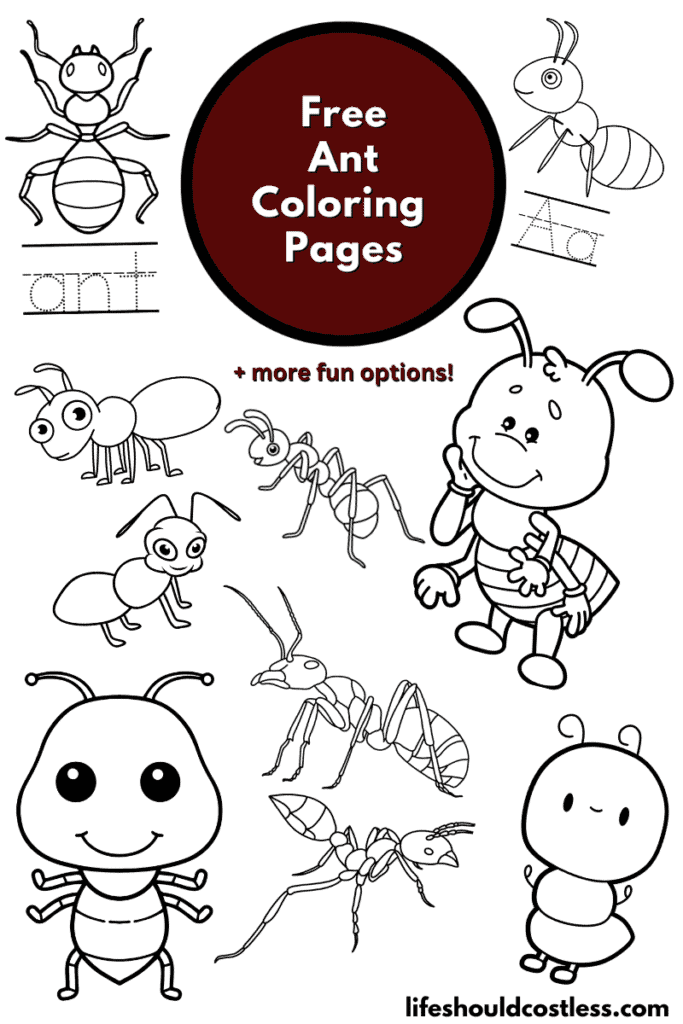
Select the design that resonates with you, download the complimentary PDF template, print it, and begin coloring to your heart’s delight.
Alternatively, these designs can serve as embroidery patterns or offer inspiration for delicate fine-line tattoos.
Ant facts
For those who are just discovering my coloring pages for the first time, it’s worth noting that I always provide you with the choice to delve into the subject matter, seamlessly transforming your coloring experience into an educational lesson.
So, let’s embark on this journey together!
Here are lots of fun and interesting, simplified, facts about ants:
- Superorganism Societies: Ants are known for their remarkable social structures. They live in colonies with specific roles for each member, creating what’s often referred to as a “superorganism.” This means the colony operates as a single entity, with ants working together in harmony.
- Countless Species: There are over 12,000 identified species of ants worldwide, and scientists estimate that there could be even more waiting to be discovered. Each species has its unique behaviors, appearances, and roles within their respective colonies.
- Ant Bridges: Certain ant species can create living bridges by linking their bodies to form a chain. This bridge-building behavior helps the colony navigate obstacles such as gaps and water bodies, showcasing their adaptability.
- Ant Rafts: In flood-prone areas, some ant colonies can create rafts by linking together and using their buoyant bodies to stay afloat. This allows them to survive and relocate during floods.
- Ant Farming: Leafcutter ants are true farmers. They cut leaves and use them to cultivate fungus, which serves as their primary food source. This mutualistic relationship between ants and fungus is an example of sophisticated agricultural behavior in the insect world.
- Strong and Industrious: Ants are incredibly strong relative to their size. They can carry objects many times heavier than their own body weight. This strength is vital for tasks like foraging, nest-building, and defense.
- Ant Communication: Ants communicate primarily through chemical signals called pheromones. These chemical cues help them convey information about food sources, danger, and even mark trails for other ants to follow.
- Diverse Diets: While some ants are herbivores, feeding on nectar and plants, others are omnivores that consume a variety of foods, including insects and other small animals.
- Ant Castes: Ant colonies consist of different castes, each specialized for particular tasks. These castes can include workers, soldiers, and reproductive ants (queens and males). The queen is responsible for laying eggs and maintaining the colony’s population.
- Ant Intelligence: Ants demonstrate collective intelligence through their intricate division of labor and problem-solving abilities. Some species can even solve complex tasks, like finding the shortest route to a food source.
- Slave-Making Ants: Some ants engage in raiding other colonies and capturing their pupae. Once these pupae hatch, they are raised as slaves within the captor colony, performing various tasks.
- Ant Migrations: Certain ant species engage in spectacular long-distance migrations, moving their entire colony to a new location when conditions change. This phenomenon can involve thousands or even millions of ants.
- Ant Mimicry: Some insects and spiders have evolved to mimic ants. This mimicry can help them avoid predators since ants are often left alone due to their stinging abilities.
- Ecosystem Engineers: Ants play a crucial role in their ecosystems. They aerate soil, disperse seeds, and recycle organic matter, contributing to plant growth and overall ecosystem health.
- Global Distribution: Ants inhabit nearly every corner of the Earth, from rainforests to deserts, and from urban environments to high mountain altitudes.
- Longevity: Worker ants have relatively short lifespans, often just a few weeks to a few months. However, ant queens can live for several years, even decades in some cases.
- Environmental Indicators: Ants are used as bioindicators in ecological studies. Their presence and behavior can provide insights into the health of ecosystems and the impact of environmental changes.
- Fossil Record: Ants have a rich fossil record, with some specimens dating back to the Cretaceous period, around 100 million years ago.
- Medical Research: Ant venom contains compounds that have potential medical applications, including antimicrobial and anti-inflammatory properties that are being studied for pharmaceutical use.
- Cultural Significance: Ants have inspired stories, fables, and cultural references in various societies around the world. Their industriousness and teamwork often serve as metaphors for human values and behaviors.
These fascinating facts about ants demonstrate just how intricate and captivating the world of these tiny insects can be.
Whether you’re coloring them on pages or observing them in nature, ants offer a window into the complexity of life at a miniature scale.
We learned a lot, but there is definitely more to know about ants. If you would like to keep reading, here are some other reputable resources to learn about them while coloring:
- https://en.wikipedia.org/wiki/Ant
- https://www.nationalgeographic.com/animals/invertebrates/facts/ants
- https://kids.britannica.com/kids/article/ant/352759
- https://rockedu.rockefeller.edu/component/know-ants/
- To see all of my free printables, go here.
- If you would like to see my index of free printable coloring pages, go here!
- To see all of my animal coloring pages, go here.
- To see all of my insect-related coloring pages, go here.
Printing instructions
*Keep in mind that while these coloring sheets are free, they are for personal use only. Any additional use will need written permission, from me, obtained via email. Thanks.*

How to get best results with your ant printable
From writing practice worksheets to various fun designs, there are ant coloring options for everyone.
Materials
- Black Ink/Toner
- Standard 8.5"x11" Printing Paper (or quality cardstock)
Tools
- Printer
- Computer/ Phone/ Or Tablet To Download To
- Colored Pencils
- Pencil Sharpener
- Eraser (optional)
Instructions
-
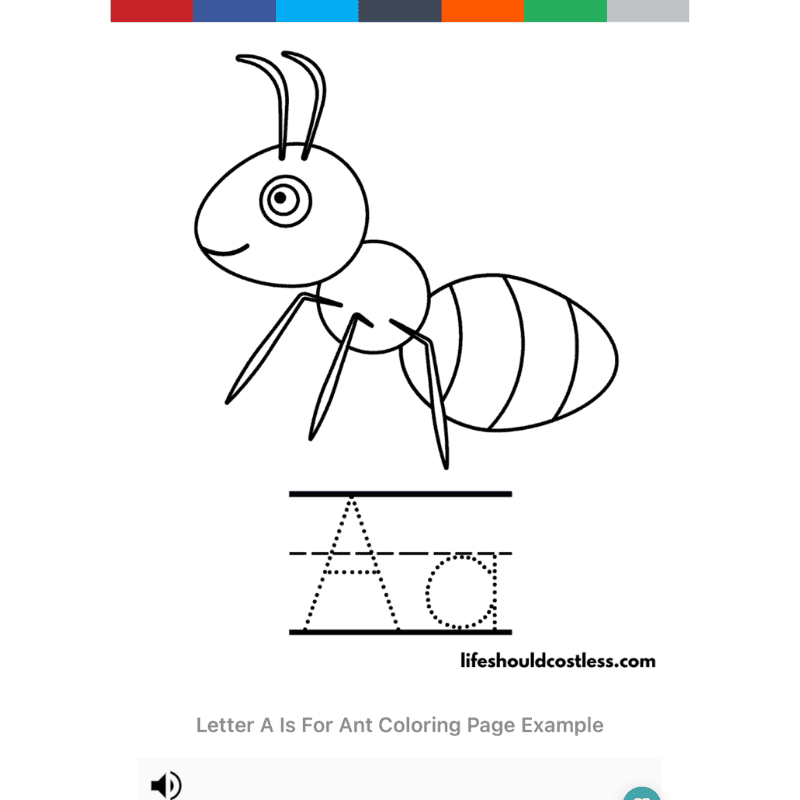 Browse through the options of coloring sheets available and select the image or images you would like to color. The provided sample image, featuring the website's watermark, offers an idea of what the complete PDF looks like.
Browse through the options of coloring sheets available and select the image or images you would like to color. The provided sample image, featuring the website's watermark, offers an idea of what the complete PDF looks like. -
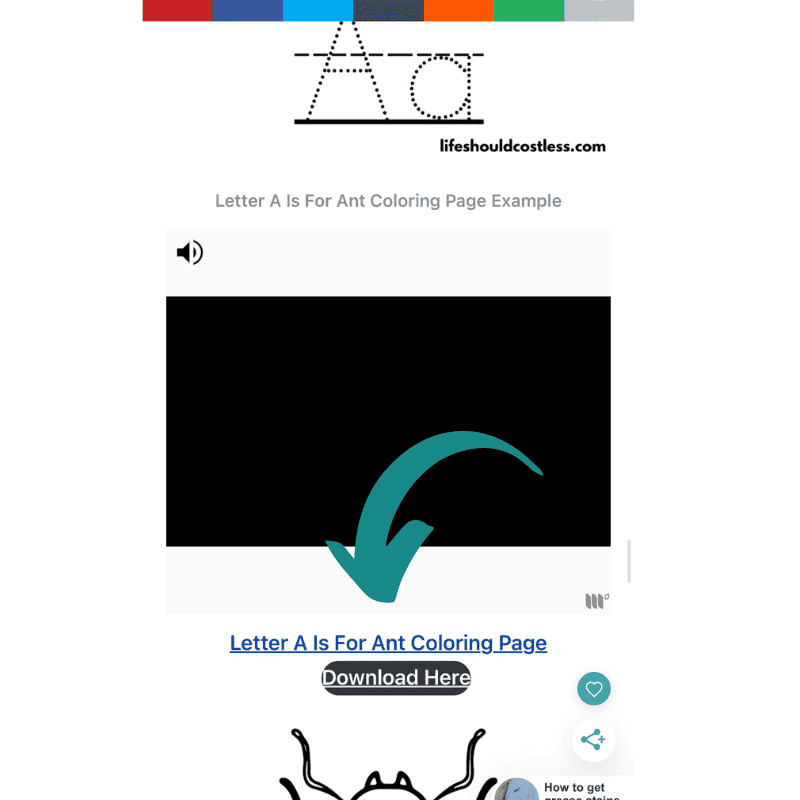 Direct your attention just below the preferred sample image to locate the "download here" button for the attached PDF.
Direct your attention just below the preferred sample image to locate the "download here" button for the attached PDF. -
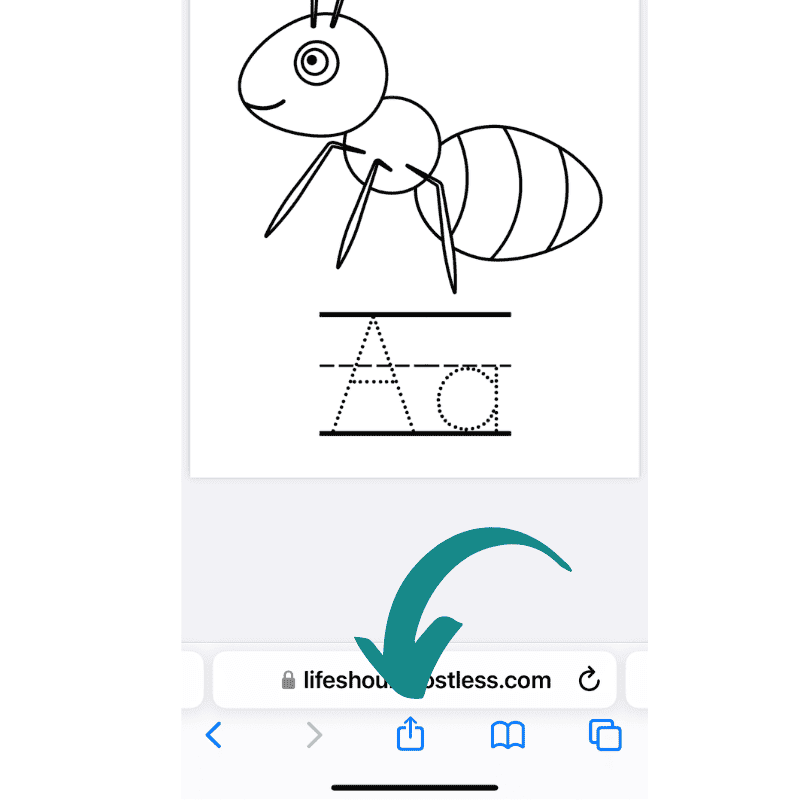
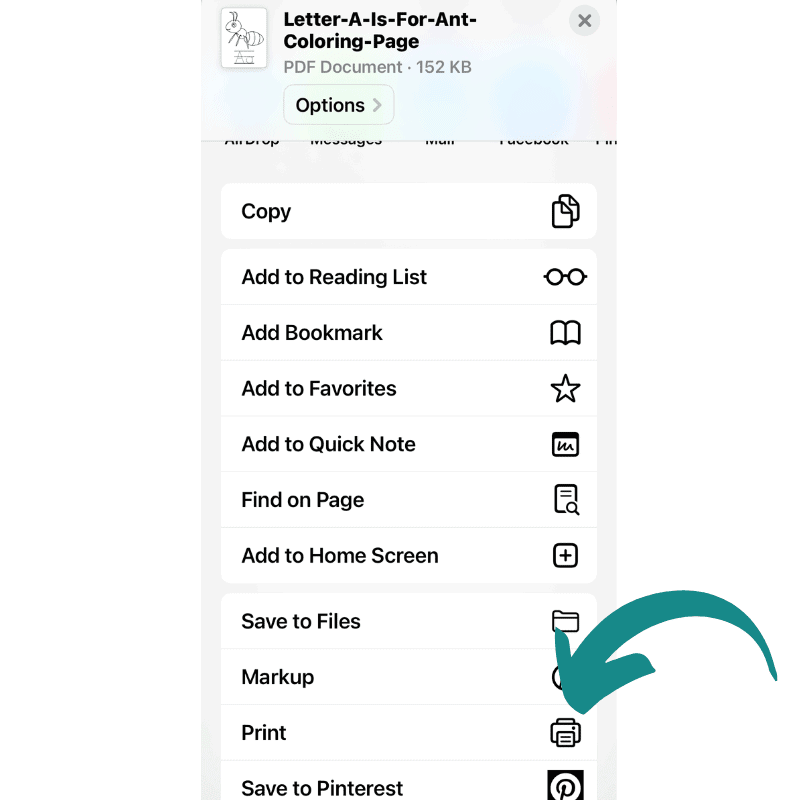 Select the download, then print options.
Select the download, then print options. -
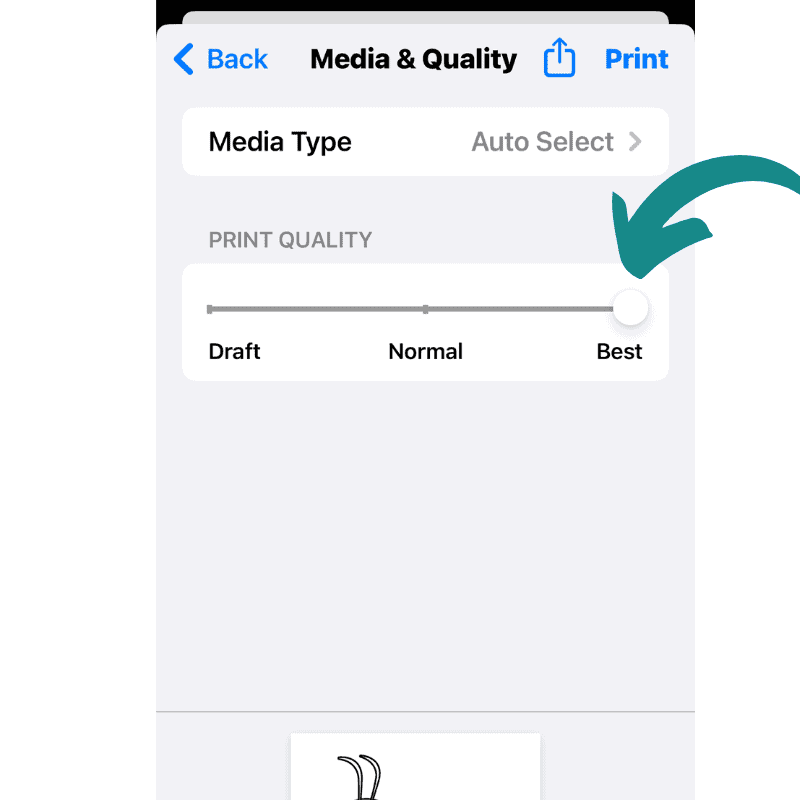 When you're ready to print, make sure to choose the maximum-quality setting or the highest DPI (dots per inch) setting accessible. DPI refers to the amount of printed dots within an inch of a printed image, and a greater the number indicates better print quality.
When you're ready to print, make sure to choose the maximum-quality setting or the highest DPI (dots per inch) setting accessible. DPI refers to the amount of printed dots within an inch of a printed image, and a greater the number indicates better print quality. -
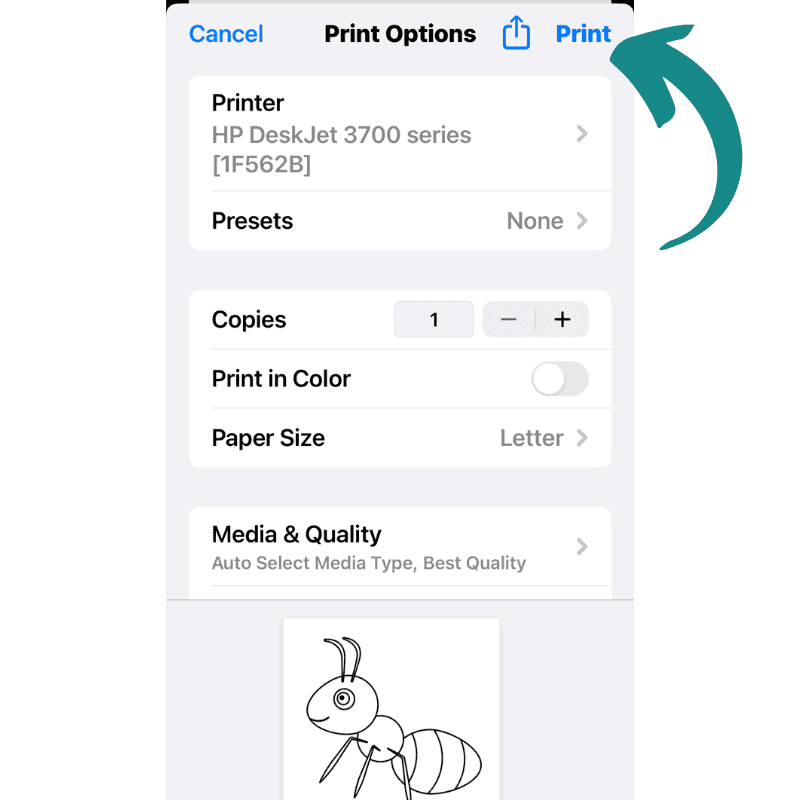 Now select "print" and send it to your desired printer.
Now select "print" and send it to your desired printer. -
 After you have completed printing your coloring sheet, give the ink a few minutes to set and completely dry. This extra precaution will help to avoid any smudging, which is particularly helpful if you would like to gift your artwork to someone.
After you have completed printing your coloring sheet, give the ink a few minutes to set and completely dry. This extra precaution will help to avoid any smudging, which is particularly helpful if you would like to gift your artwork to someone. -
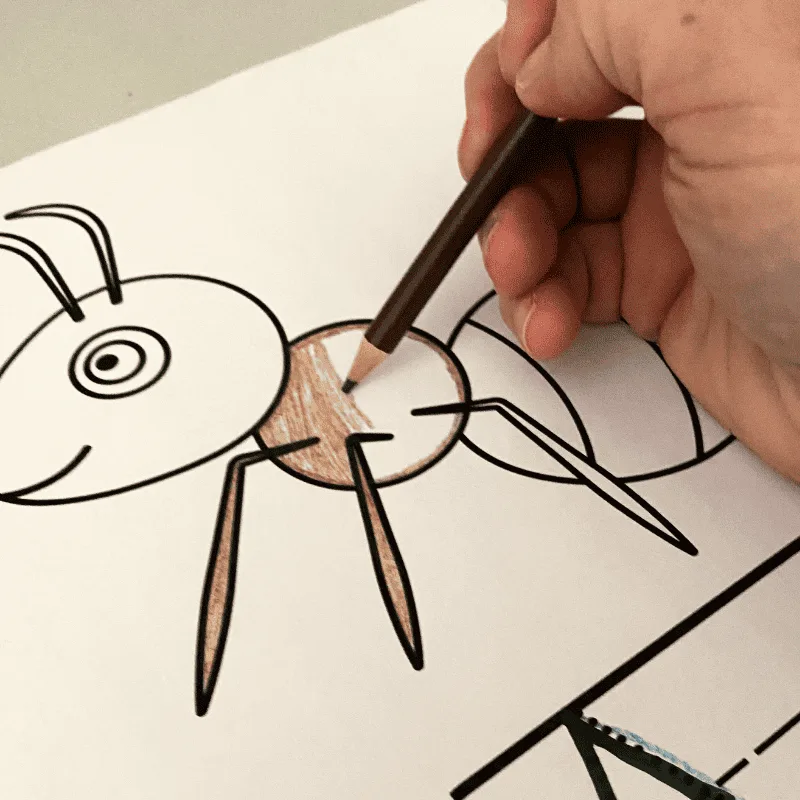 Before you begin coloring, make sure your hands have been washed and are completely dry. Locate a clean and flat surface to place your paper on, and then let your creativity flow as you color the prints however you wish. Once you're done, enjoy the sense of accomplishment, knowing that these artwork creations can possibly bring delight to you and others for many years to come.
Before you begin coloring, make sure your hands have been washed and are completely dry. Locate a clean and flat surface to place your paper on, and then let your creativity flow as you color the prints however you wish. Once you're done, enjoy the sense of accomplishment, knowing that these artwork creations can possibly bring delight to you and others for many years to come.
Notes
Ideas on what to do with these ant pictures:
You could print the pages out and bind them, pair them with some nice colored pencils or an art set, which could be a fun but unique gift for any coloring enthusiast's special day...or any time you wish to cheer someone up.
You could buy some simple frames, and have them printed onto quality card stock at a local printing company, color them as well as possible, and they could be added to your home decor.
These free ant coloring pictures can also be used as embroidery patterns using transfer sheets.
Alternatively, they can serve as inspiration or templates for delicate fine-line tattoos.
Naturally, you also have the choice to print them and enjoy boundless amusement by coloring them repeatedly.
*It's worth mentioning that this website employs an image optimizer for the sample illustrations. This optimization improves loading speed, albeit with a slight reduction in quality. For optimal results, we recommend downloading and directly utilizing the PDF file. The sample image serves to provide a general visual preview, as navigating through an entire PDF might present challenges on certain devices, potentially hindering the ability to view the complete image in a single screenshot.
**Guidelines for achieving the finest print quality are primarily tailored to iPhone users with an HP printer, although they should be similarly applicable to other devices.
***Whenever feasible, opt for the "fit to page" setting before printing to ensure the entire image is encompassed within your printed coloring page.
Recommended Products
Please note that I am an affiliate with Amazon.com. When you purchase through my suggested product links, the cost for you is the same but I do receive a small commission for everything in your shopping cart. Thanks so much for the support!
-
 Printworks Vanishing Embroidery Transfers, for White/Light-Colored Fabrics, 12 Sheets, Inkjet, 8.5 x 11 (00524)
Printworks Vanishing Embroidery Transfers, for White/Light-Colored Fabrics, 12 Sheets, Inkjet, 8.5 x 11 (00524) -
 eletecpro 12x16 Picture Frames Set of 5, Display 8x10 or 8.5x11 Photo Frame with Mat or 12x16 without Mat, Wall Gallery Poster Frames, Photo Frames Collage for Wall Display
eletecpro 12x16 Picture Frames Set of 5, Display 8x10 or 8.5x11 Photo Frame with Mat or 12x16 without Mat, Wall Gallery Poster Frames, Photo Frames Collage for Wall Display -
 Sacnahe Tattoo Transfer Stencil Machine Copier Printer Thermal Tattoo Kit Copier Printer With 20pcs Free Tattoo Stencil Transfer Paper Black (2023 Update Version)
Sacnahe Tattoo Transfer Stencil Machine Copier Printer Thermal Tattoo Kit Copier Printer With 20pcs Free Tattoo Stencil Transfer Paper Black (2023 Update Version) -
 PRINA Art Supplies 120-Color Colored Pencils Set for Adults Coloring Books with Sketchbook, Professional Vibrant Artists Pencil for Drawing Sketching Blending Shading, Quality Soft Core Oil Based
PRINA Art Supplies 120-Color Colored Pencils Set for Adults Coloring Books with Sketchbook, Professional Vibrant Artists Pencil for Drawing Sketching Blending Shading, Quality Soft Core Oil Based -
 U.S. Art Supply 163-Piece Mega Deluxe Art Painting, Drawing Set in Wood Box, Desk Easel - Artist Painting Pad, 2 Sketch Pads, 24 Watercolor Paint Colors, 24 Oil Pastels, 24 Colored Pencils, 60 Crayons
U.S. Art Supply 163-Piece Mega Deluxe Art Painting, Drawing Set in Wood Box, Desk Easel - Artist Painting Pad, 2 Sketch Pads, 24 Watercolor Paint Colors, 24 Oil Pastels, 24 Colored Pencils, 60 Crayons -
 Looney Zoo Temporary Tattoo Markers for Skin, 10 Body Markers + 20 Large Tattoo Stencils for Kids and Adults, Dual-End Tattoo Pens Make Bold and Fine Lines with Cosmetic-Grade Temporary Tattoo Ink
Looney Zoo Temporary Tattoo Markers for Skin, 10 Body Markers + 20 Large Tattoo Stencils for Kids and Adults, Dual-End Tattoo Pens Make Bold and Fine Lines with Cosmetic-Grade Temporary Tattoo Ink
Coloring tips
Coloring a picture of an ant can be a delightful and creative experience. Here are some tips and tricks to help you bring these tiny creatures to life on the page:
- Reference Images: Look at real ant images or illustrations to get a sense of their coloration, body structure, and details. This will help you achieve a more realistic and accurate representation.
- Color Variety: While ants are often associated with black or brown, they can come in a range of colors, including red, yellow, and even metallic hues. Experiment with different colors to add vibrancy to your coloring.
- Shading and Depth: To give your ant more depth and dimension, use shading techniques. Start with a base color and then add darker shades in areas that would naturally be shadowed, like under the body or behind legs.
- Texture and Details: Ants have distinct body segments and features like mandibles, antennae, and legs. Pay attention to these details and use varying line weights to create texture and differentiation.
- Natural Backgrounds: Consider adding a natural background to your ant coloring page, like leaves, dirt, or grass. This will give context to the scene and enhance the overall visual appeal.
- Contrast: Use contrasting colors to make certain elements stand out. For instance, a brightly colored ant against a darker background can create visual interest.
- Color Harmony: Choose a color palette that harmonizes well with the subject. Earthy tones and subtle hues can evoke a natural feel, while vibrant colors can add a touch of whimsy.
- Experiment with Mediums: Depending on your preferred medium—colored pencils, markers, watercolors, or digital tools—experiment with different techniques to achieve the desired effect.
- Blend Colors: If using colored pencils, experiment with blending techniques. Layering different colors and using blending pencils or a soft eraser can help achieve smooth transitions.
- Highlighting: Add a touch of light color or white gel pen to highlight specific areas, such as the tops of ant bodies or their eyes, to create a glossy effect.
- Pattern Play: Some ant species have distinct patterns on their bodies. Research the species you’re coloring and try to replicate those patterns for added realism.
- Environmental Interaction: If your ant is depicted in a particular environment, consider how lighting and colors from the surroundings might affect the ant’s appearance. Reflections and shadows can make your coloring more dynamic.
- Study Anatomy: Understanding ant anatomy can help you place colors more accurately. For instance, the segments of the ant’s body might have slightly different shades.
- Practice Patience: Coloring requires patience and attention to detail. Take your time, and remember that practice makes perfect.
- Personal Touch: Don’t be afraid to add your personal creative touch. You could experiment with abstract backgrounds, add whimsical elements, or even create a fantastical scene.
Remember, the beauty of coloring lies in your interpretation and creativity. Enjoy the process, and have fun bringing your ant artwork to life with your unique artistic flair!
Options For Printing:
Letter A is for ant writing practice worksheets
*My letter A is for ant coloring sheet printables are exclusively crafted for classroom use. Unlike other printables on this page, they can be freely utilized in public settings without requiring written authorization.
Kindly share the link to this post if anyone inquires about their source. Your cooperation is greatly appreciated!
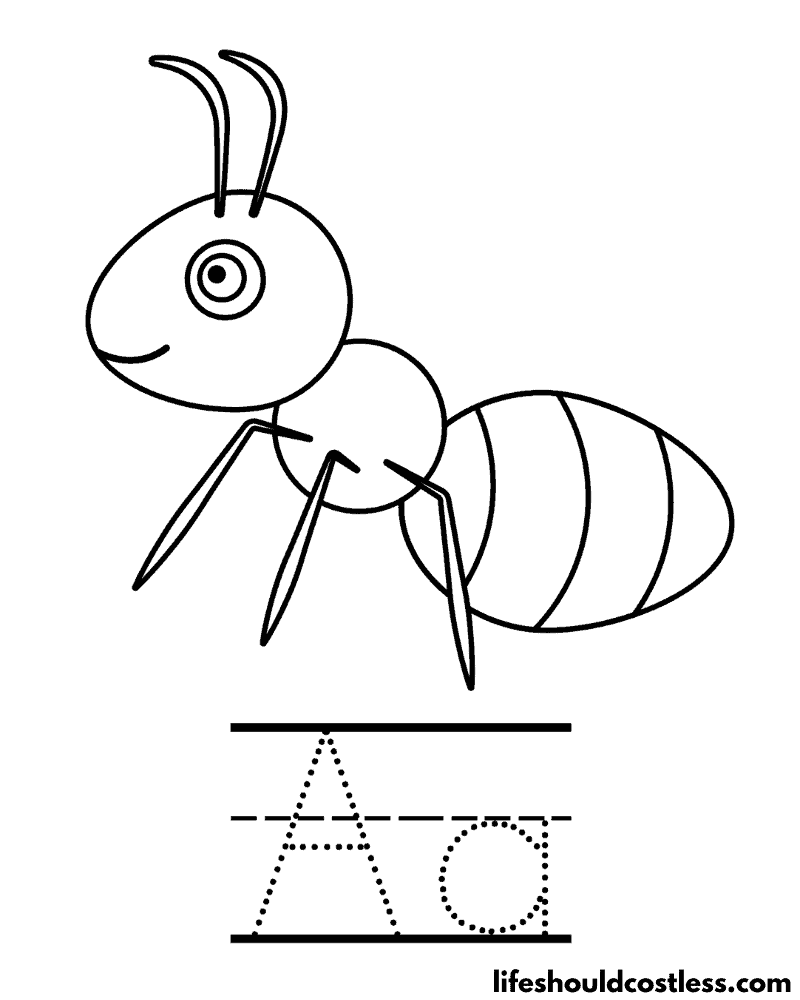
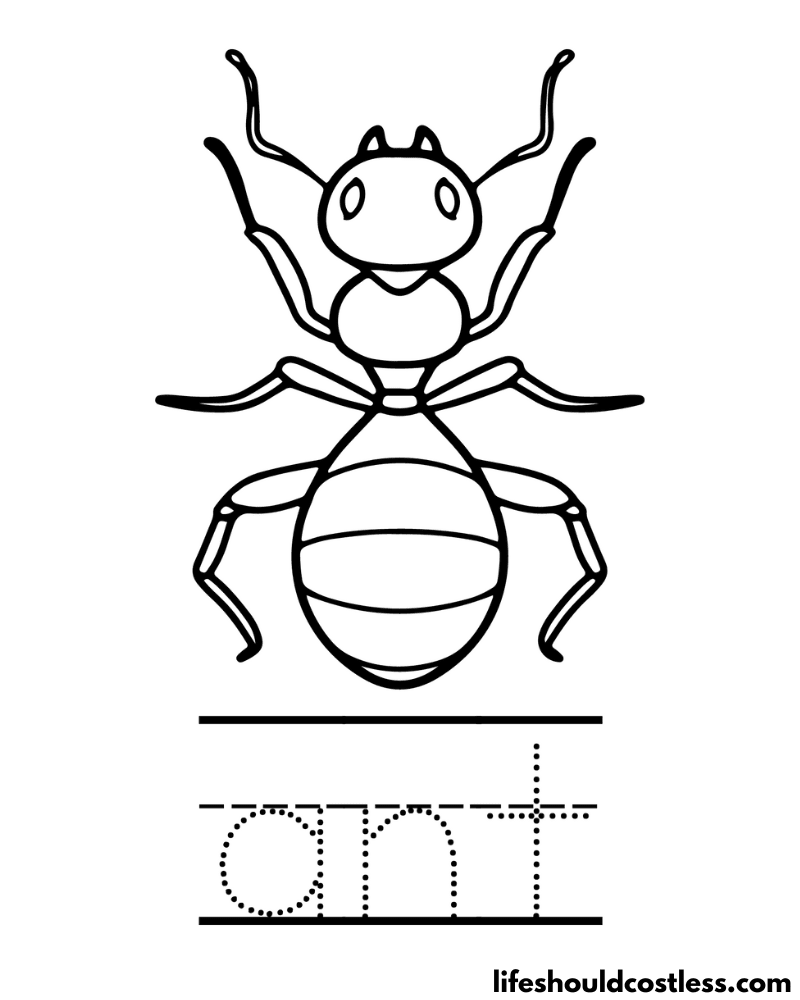
Various Ant Designs
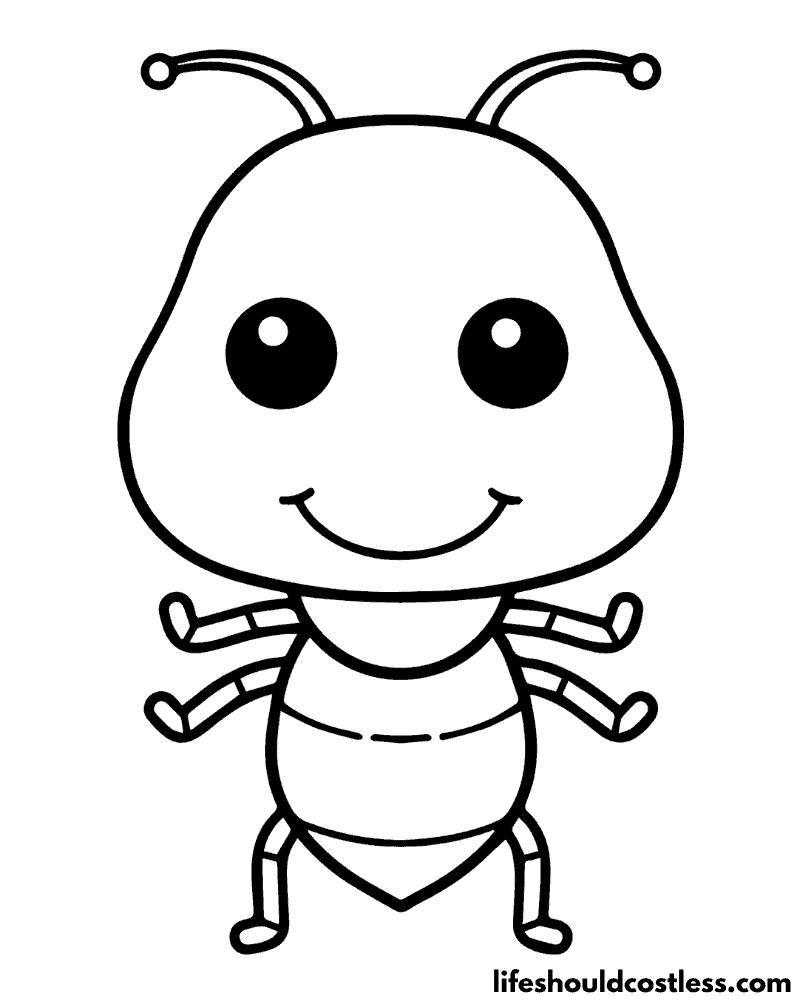


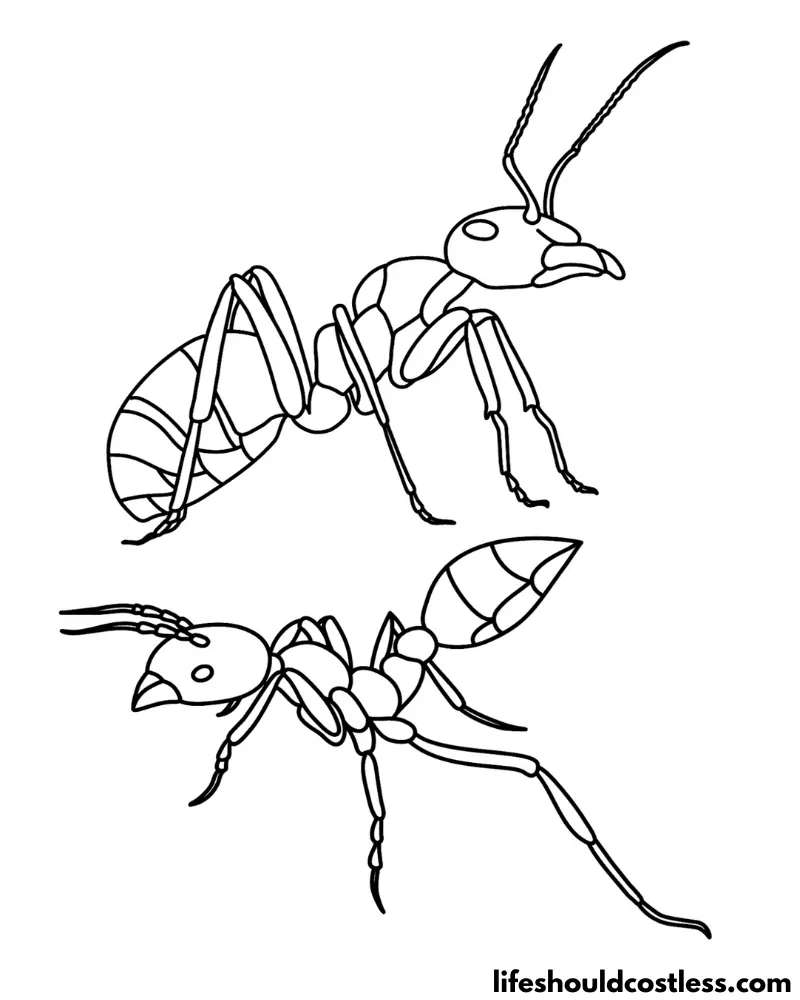
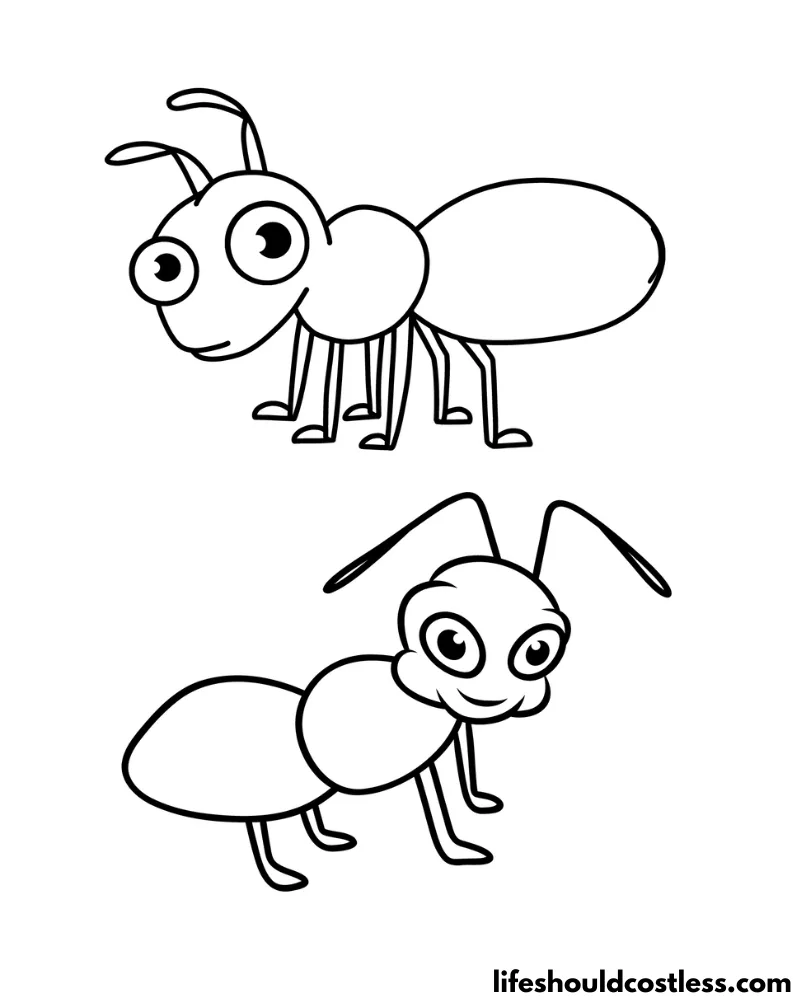
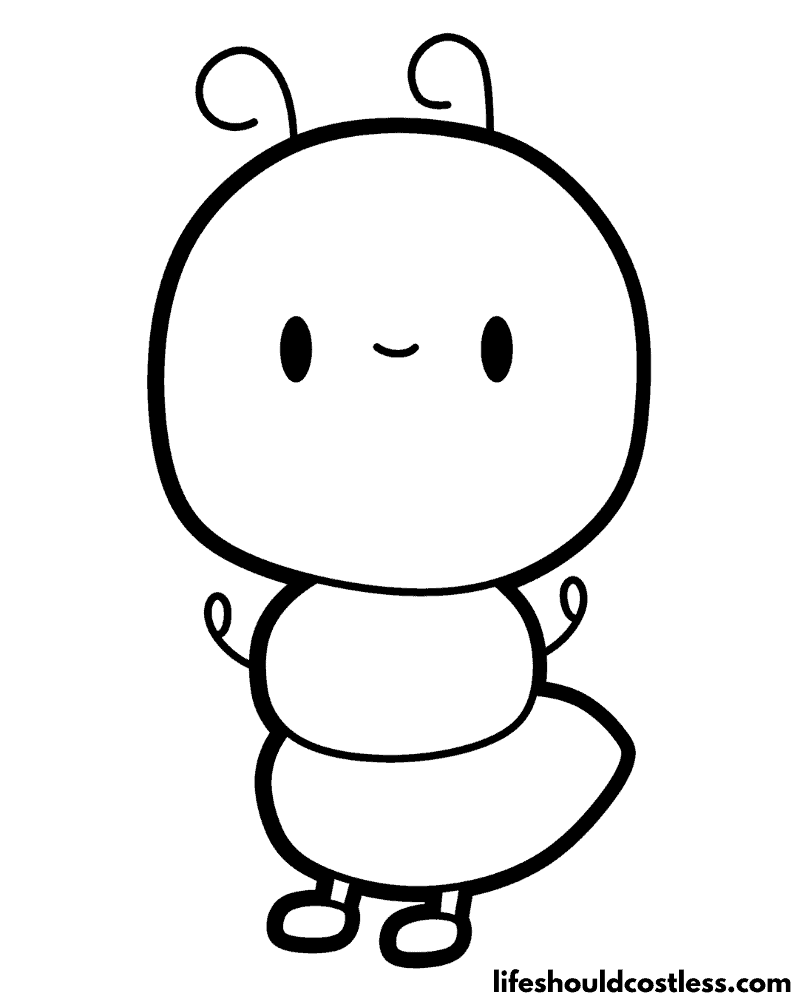
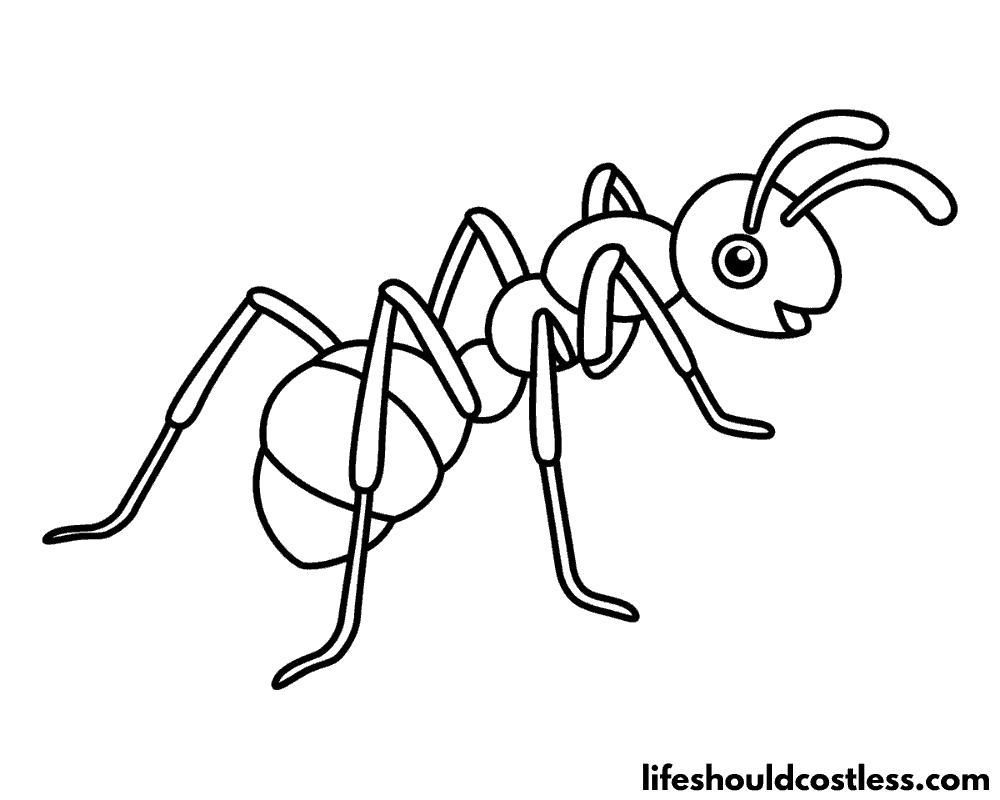
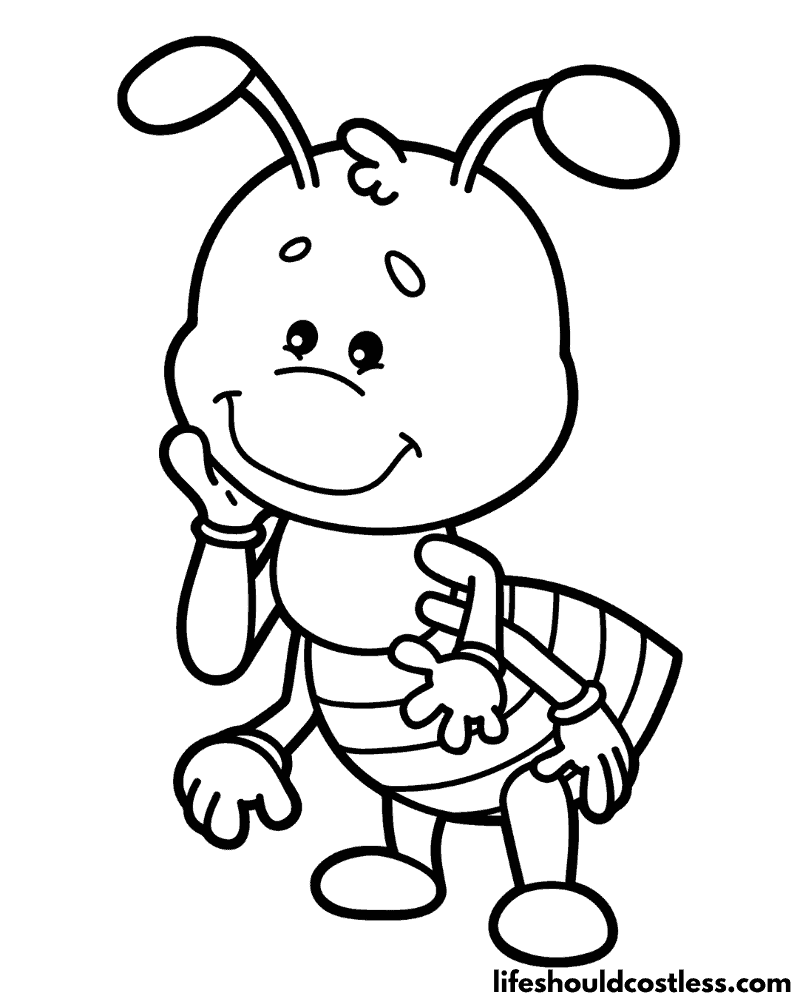

FAQ’s
Ants come in a wide range of colors, depending on the species. While many people commonly associate ants with black or brown, their coloration can vary significantly. Here are some examples of ant colors:
Black: Black is a common color for ants. Many species, especially larger ones, have a black or very dark brown coloration. These ants might have subtle variations in shade or even appear slightly iridescent in certain lighting.
Red: Some ants are red or reddish-brown in color. Fire ants, for example, are well-known for their reddish appearance. They can vary from bright red to a deeper shade.
Yellow: Yellow ants are also present in nature. Their color can range from pale yellow to a more vibrant golden hue.
Brown: While brown is often associated with ants, it’s important to note that brown can encompass a range of shades. Some ants might have a light tan or sandy brown coloration, while others could be a rich, dark brown.
Orange: Certain ant species, particularly in tropical regions, exhibit orange coloration. This can vary from a soft peachy hue to a more vibrant orange.
Green: Some species of ants, like the “green tree ant” found in Australia, have a green coloration. This adaptation helps them blend into their leafy environments.
Metallic: Some ants have a metallic sheen to their bodies, appearing almost iridescent. These ants might exhibit shades of blue, green, or purple, creating a striking visual effect.
Bicolor or Tricolor: Certain ants have complex color patterns, such as a combination of black and red, or even three distinct colors. These patterns can vary widely between species.
Transparent: Some ants have a transparent or translucent appearance, revealing their internal organs and digestive system. This trait is particularly common in smaller ant species.
Camouflage: Depending on their habitat, some ants might adopt colors that help them blend in with their surroundings, making them harder to spot by predators.
It’s important to remember that ant coloration can be influenced by various factors, including genetics, environment, and diet.
Additionally, the diversity of ant species means there is a wide spectrum of colors within the ant world.
*I will add more ant colour / color questions and answers as the questions get sent to me.
Conclusion
As we conclude this journey through the captivating world of ant coloring pages, we’re reminded of the remarkable depth and diversity that these tiny insects bring to our creative canvas.
From the meticulous attention to detail in their intricate body structures to the vibrant spectrum of colors they inhabit, ants provide a unique and engaging subject for artistic exploration.
Whether you’re a curious learner, an enthusiastic artist, or a parent seeking both education and entertainment for your child, these coloring pages offer an immersive experience into the world of teamwork, adaptation, and intricate ecosystems that ants represent.
As you add your strokes of color and breathe life into these pages, remember that you’re not only engaging in an artistic activity but also delving into the world of one of Earth’s most fascinating and industrious inhabitants.
So let your imagination roam, let your colors flow, and let the charm of ants inspire you to create something truly remarkable on this canvas of creativity.
Thanks so much for stopping by my blog and supporting my endeavors to make people’s lives a little easier/better/more affordable.
If you liked this post, or found it helpful in any way, please make sure to share it with your family, friends, and co-workers via social media.
Or you could even send them the direct link via email. Whichever way you choose to spread the love, I super appreciate it! ~Sarah
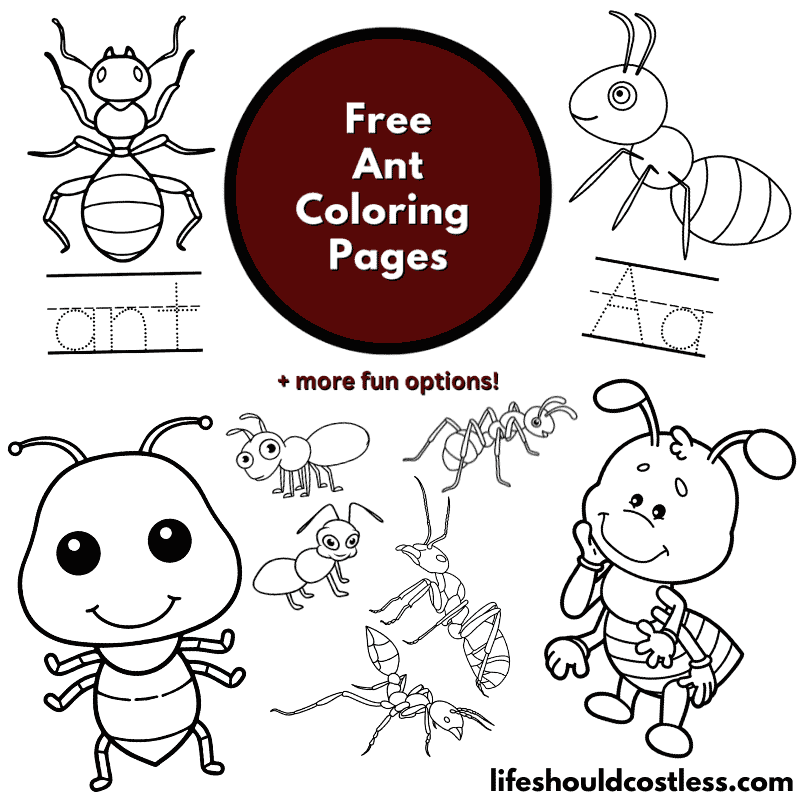
How To Follow & Support This Site
- If you would like to subscribe to my email list, go here.
- Make sure to follow along via social media, by going here.
- If you would like to learn how to really show your support to this site (at no cost to you), go here.
- If you would like to make a direct donation to the site, go here.
Check out my other free printables
- To see all of my free printables, go here.
- If you would like to see my index of free printable coloring pages, go here!
- To see all of my animal coloring pages, go here.
- To see all of my insect-related coloring pages, go here.
Otherwise, here are direct links to several of my other related posts that you’re also going to love:
Animals / Insects
Animals / Birds
Animals / Mammals
Other good resources for a printable ant
- https://www.coloryourname.net/en/customizable-coloring-animal-intermediate-coloring-pages-ant-1648.html
- https://pluscoloring.com/search-ant.htm
- https://www.antsalive.com/kids-activities.htm
*This post was originally shared to this blog on 08/25/2023, and has since been updated to improve user experience, add video instruction, as well as to make it as shareable as possible across the social medias.
**Please note that I do try my hardest to provide factual, but easy to understand, information about each topic. If you notice a discrepancy in my coloring pages, facts, or see something that you deem “misinformation/incorrect” please make sure to notify me about it. I would prefer that you send me an email with a link to a more reputable resource on that subject, so that I can correct it as soon as possible. Thanks so much for helping this site become the best that it can be!
***Resources from djinkers were used in the production of this article.
